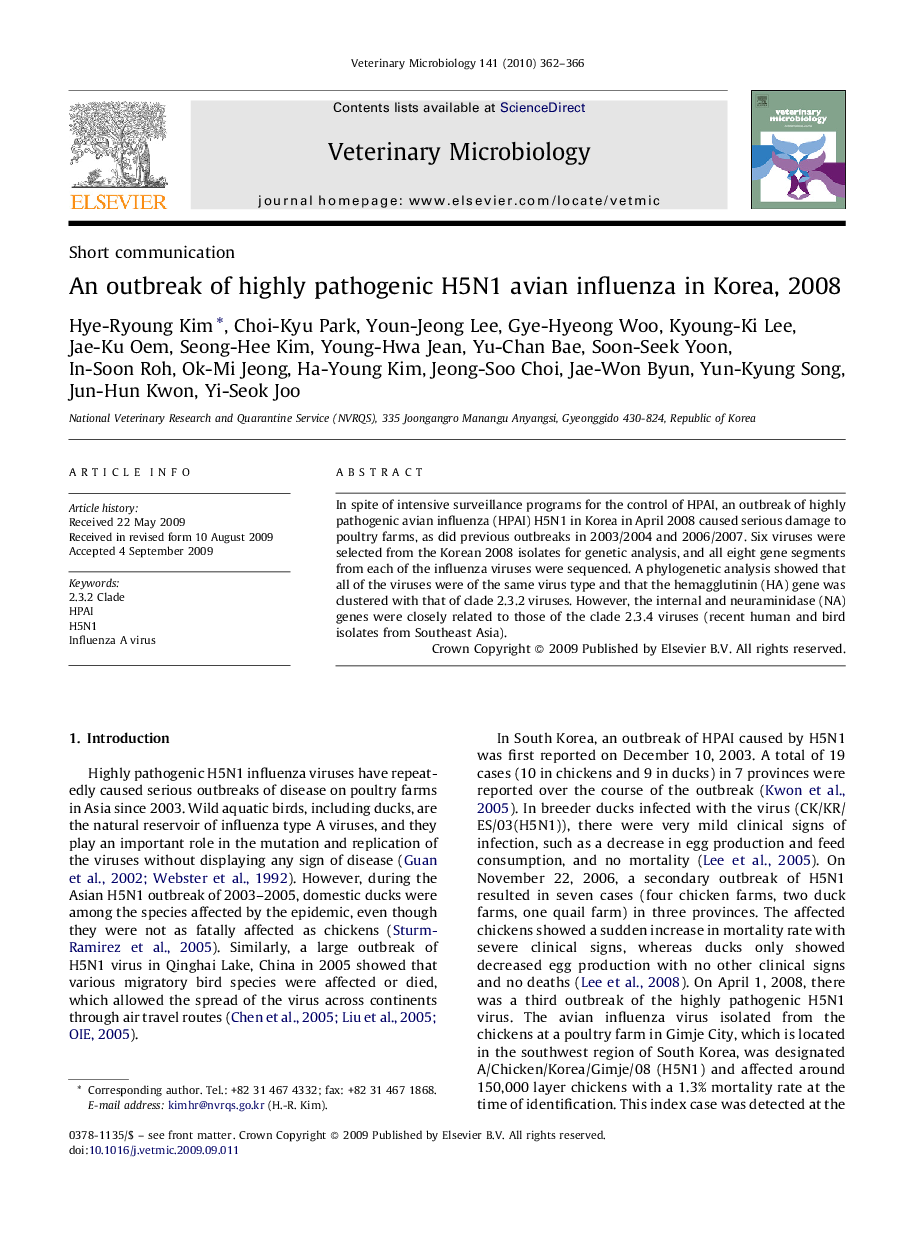| Article ID | Journal | Published Year | Pages | File Type |
|---|---|---|---|---|
| 2467820 | Veterinary Microbiology | 2010 | 5 Pages |
Abstract
In spite of intensive surveillance programs for the control of HPAI, an outbreak of highly pathogenic avian influenza (HPAI) H5N1 in Korea in April 2008 caused serious damage to poultry farms, as did previous outbreaks in 2003/2004 and 2006/2007. Six viruses were selected from the Korean 2008 isolates for genetic analysis, and all eight gene segments from each of the influenza viruses were sequenced. A phylogenetic analysis showed that all of the viruses were of the same virus type and that the hemagglutinin (HA) gene was clustered with that of clade 2.3.2 viruses. However, the internal and neuraminidase (NA) genes were closely related to those of the clade 2.3.4 viruses (recent human and bird isolates from Southeast Asia).
Keywords
Related Topics
Life Sciences
Agricultural and Biological Sciences
Animal Science and Zoology
Authors
Hye-Ryoung Kim, Choi-Kyu Park, Youn-Jeong Lee, Gye-Hyeong Woo, Kyoung-Ki Lee, Jae-Ku Oem, Seong-Hee Kim, Young-Hwa Jean, Yu-Chan Bae, Soon-Seek Yoon, In-Soon Roh, Ok-Mi Jeong, Ha-Young Kim, Jeong-Soo Choi, Jae-Won Byun, Yun-Kyung Song, Jun-Hun Kwon,
